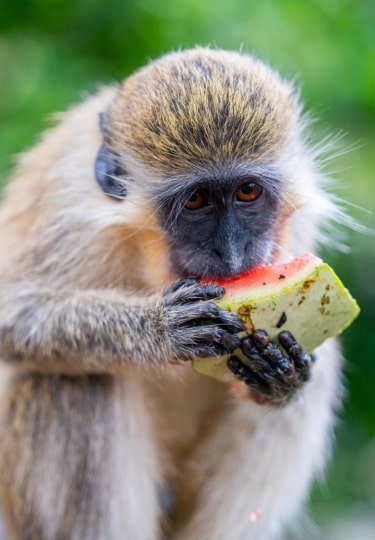There are a wide variety of animals in the Caribbean. From monkeys on land to starfish and lobsters underwater, you’ll find a delightful variety. Leaping dolphins and colorful butterflies are among the most photogenic of the region’s wildlife.
From Antigua to the US Virgin Islands, you can enjoy a delightful experience among nature’s wonders, whether you see birds and animals in the wild or observe them close up in some of the conservation and rehabilitation centers in the Caribbean.
Green Monkey
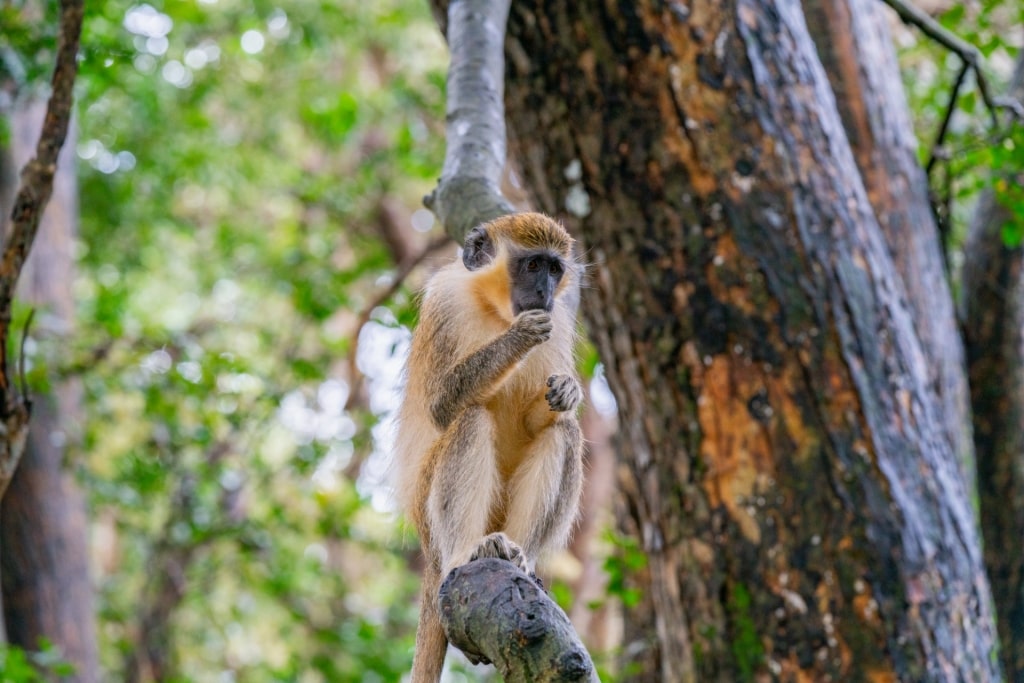
Green monkey
It’s something of a surprise to find the African green monkey (Chlorocebus aethiops sabaeus) in the Caribbean. They were probably first brought to St. Kitts as pets by 17th-century French settlers.
They have thrived in the wild on the islands of St. Kitts, Nevis, St. Martin, Tortola, and Barbados. With no natural predators, most of these populations have actually grown too large.
Indeed, St. Kitts & Nevis is thought to have more monkeys than people. While they remain shy of humans, their sheer numbers mean you will have no problem seeing them on an island tour, scampering in the trees.
Mona Monkey
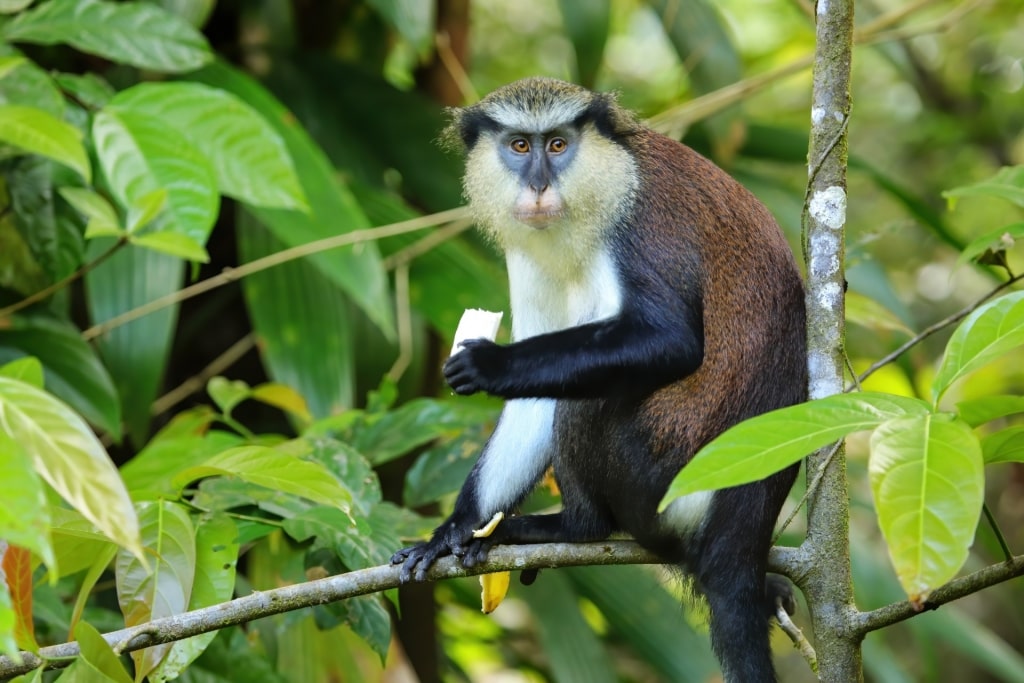
Mona monkey
Grenada is famous for its Mona monkeys (Cercopithecus mona), which first came to the land aboard 18th-century slave ships. They originated in the forests of west Africa, primarily in Ghana or Cameroon.
In Grenada, they found refuge in the lush rainforest interior. The monkeys, with their distinctive cheek pouches, are now a popular sight in Grand Etang National Park.
The mischievous monkeys have learned to approach visitors for treats, such as fruit or nuts. However, these cheekiest of Caribbean animals will also steal sunglasses or other shiny objects, so beware.
Agouti
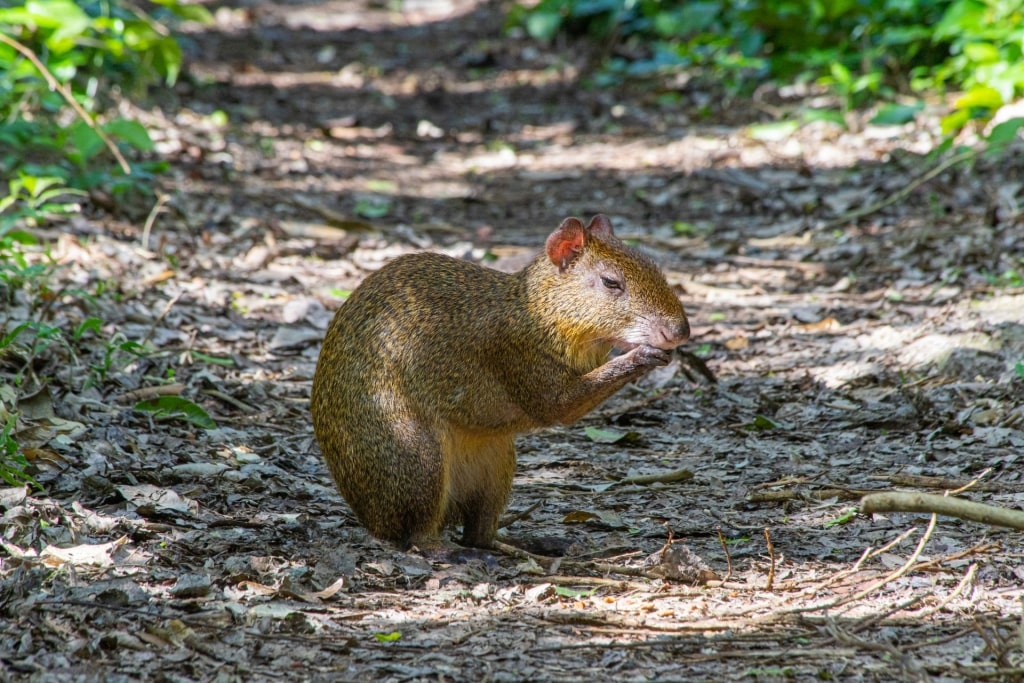
Agouti
Agoutis are a small rodent-like animal, around two feet in length, weighing up to 11 pounds. They are shy animals, living in tropical forests where they feed on fruit, seeds, and nuts.
Several different species have been introduced to the Caribbean from their South American homeland. You’ll now find them on the Cayman and Virgin islands, and in the Lesser Antilles.
As reclusive, forest-dwelling animals, it’s hard to see an agouti in the wild. However, Trinidad and Tobago, Grenada, St. Vincent, and Puerto Rico are good places to start the search.
Caribbean Flamingo
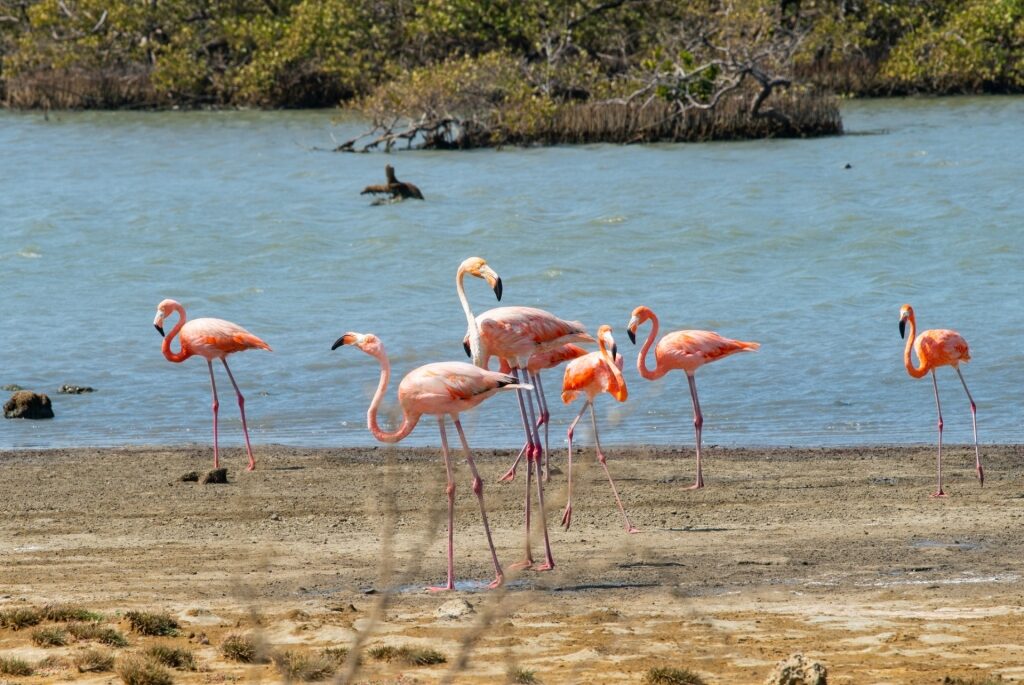
Caribbean flamingo
The distinctive silhouette of the flamingo makes it one of the few birds everybody can instantly name. The Caribbean flamingo stands out even more for its startling pink/red plumage—the brightest of all flamingo species.
Properly called the American flamingo, it is found throughout southern North America, and even in the Galapagos Islands. In the Caribbean, it’s seen everywhere from Jamaica and The Bahamas to the Yucatán Peninsula of Mexico.
However, the salt flats of the Pekelmeer Flamingo Sanctuary on Bonaire must be one of the most spectacular places to see these magnificent birds. You can also feed them on Renaissance Island, part of the neighboring Dutch “ABC” island of Aruba.
Donkey
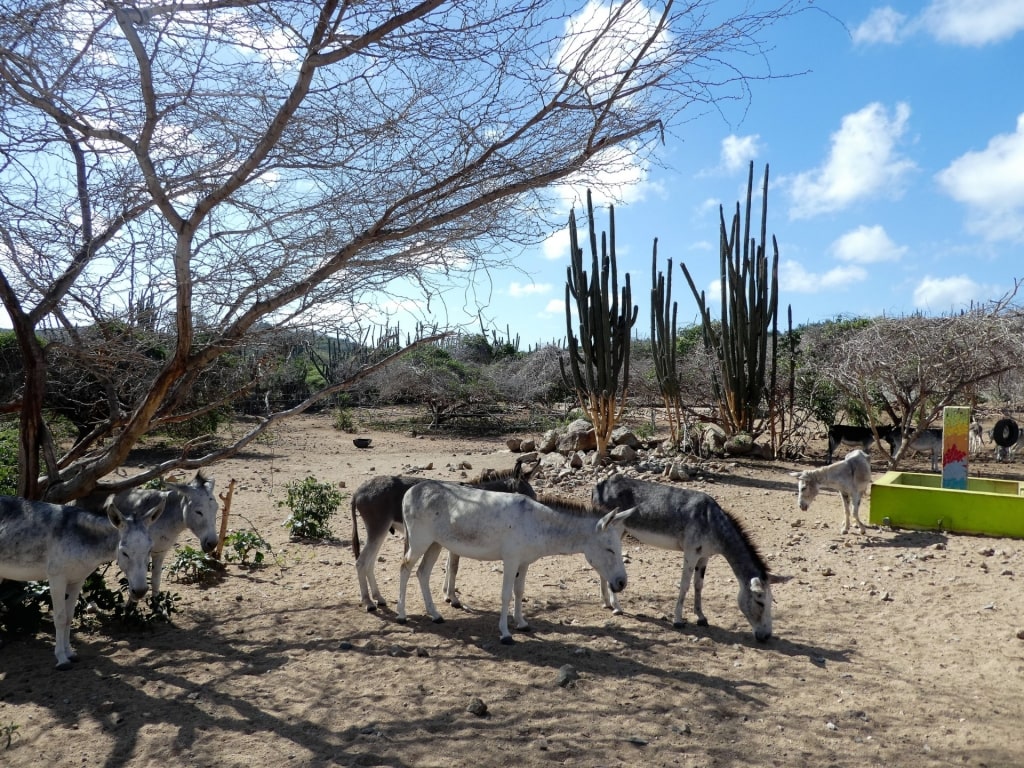
Donkey
Aruba is also a good place to see donkeys, which once served as work animals for farming, transport, and salt mining. That proud history is celebrated in the Donkey Sanctuary Aruba.
Near Santa Cruz, the sanctuary has more than 100 animals in its care. Visits are free but donations are always welcome to help with the center’s running expenses.
Many of the donkeys roam free, and you can also pet, brush or otherwise interact with them. A shop with some lovely donkey-themed gifts provides perfect souvenirs for any donkey-lover.
Bats
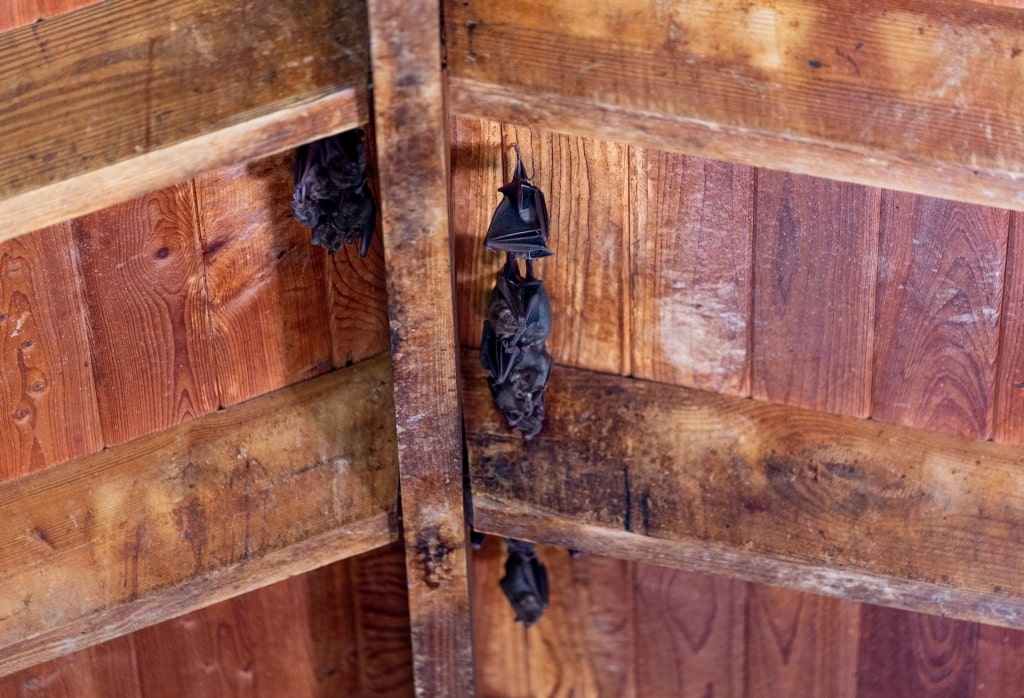
Bats
Bats are not to everyone’s liking, but these fascinating animals have lived in the Caribbean for millions of years. They are now the most diverse remaining group of terrestrial mammals in the region.
Trinidad, being close to mainland Venezuela, has more than 60 species of bat, more than on any other Caribbean island. In the Tamana Bat Caves, you can watch the evening spectacle of thousands leaving their roosts.
The Windsor Great Cave on Jamaica and the Camuy River Cave Park on Puerto Rico offer a similar experience. You can also see them up close at the Barbados Wildlife Reserve, only 35 minutes from Bridgetown.
Butterfly
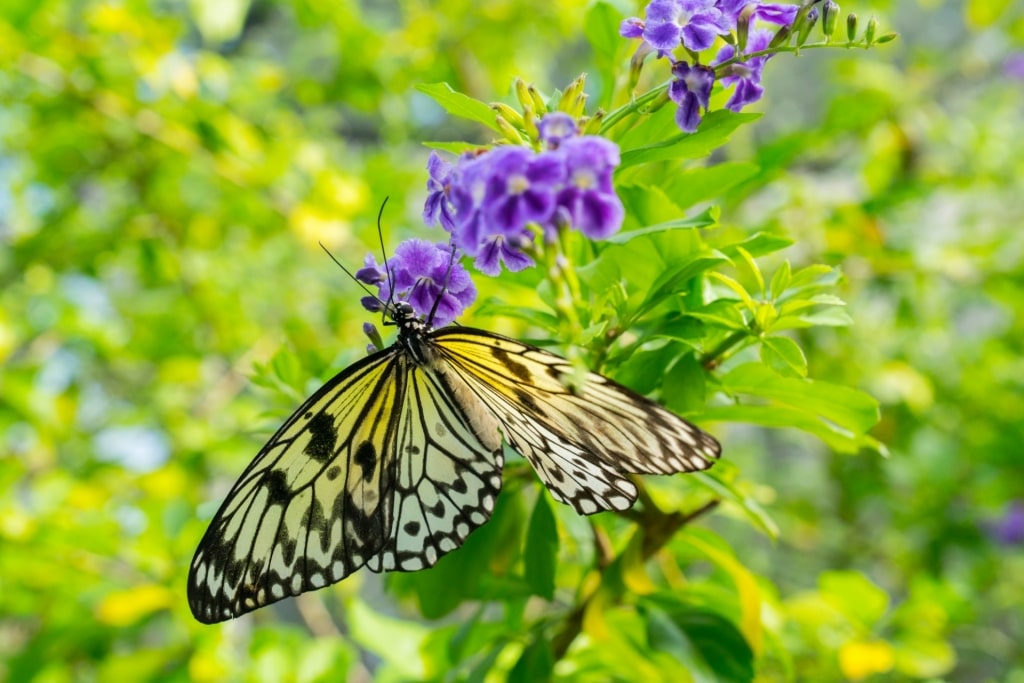
Butterfly
Butterflies have become a major attraction on several Caribbean islands, among them Puerto Rico, the Cayman Islands, and St. Martin. Even tiny St. Kitts hosts an eco park whose butterfly garden showcases the many colorful local species.
St. Martin’s Butterfly Farm is typical of the lush gardens where you can admire these loveliest of creatures. A guide will fill you in on their life cycle, if you can concentrate among the butterflies and moths flying around.
Aruba’s Butterfly Farm is another well-known destination, as is Jarabacoa Butterfly Garden in the Dominican Republic. On Grand Cayman, the Queen Elizabeth II Botanic Park attracts some 60 species of butterfly to its Floral Colour Garden.
Iguana
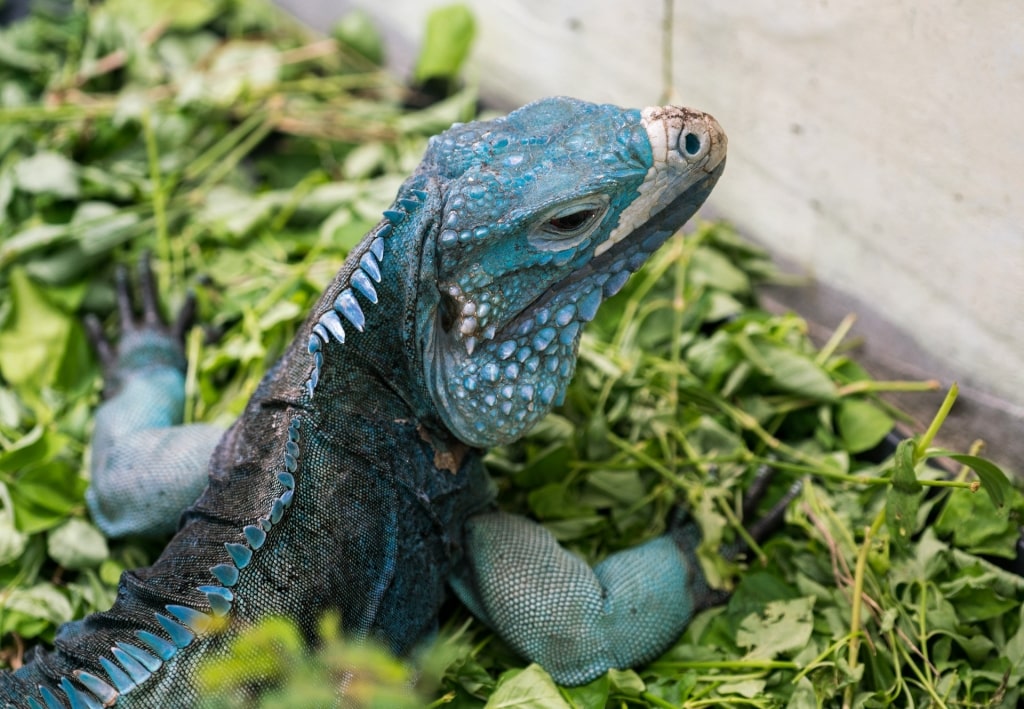
Iguana
There are some 20 species and subspecies of iguanas in the Caribbean, most critically endangered. Loss of habitat, and attacks by invasive species such as rats, dogs or cats, are the major concerns to conservationists.
Indeed, the green iguana (Iguana iguana) is itself an invasive species that threatens native animals. In response, projects such as the Blue Iguana Recovery Program on Grand Cayman have sprung up.
Visitors can see these beautiful Caribbean animals up close, and help the work of re-introducing them to the wild. Similar projects exist in Jamaica, Grenada, and St. Lucia.
Bananaquit
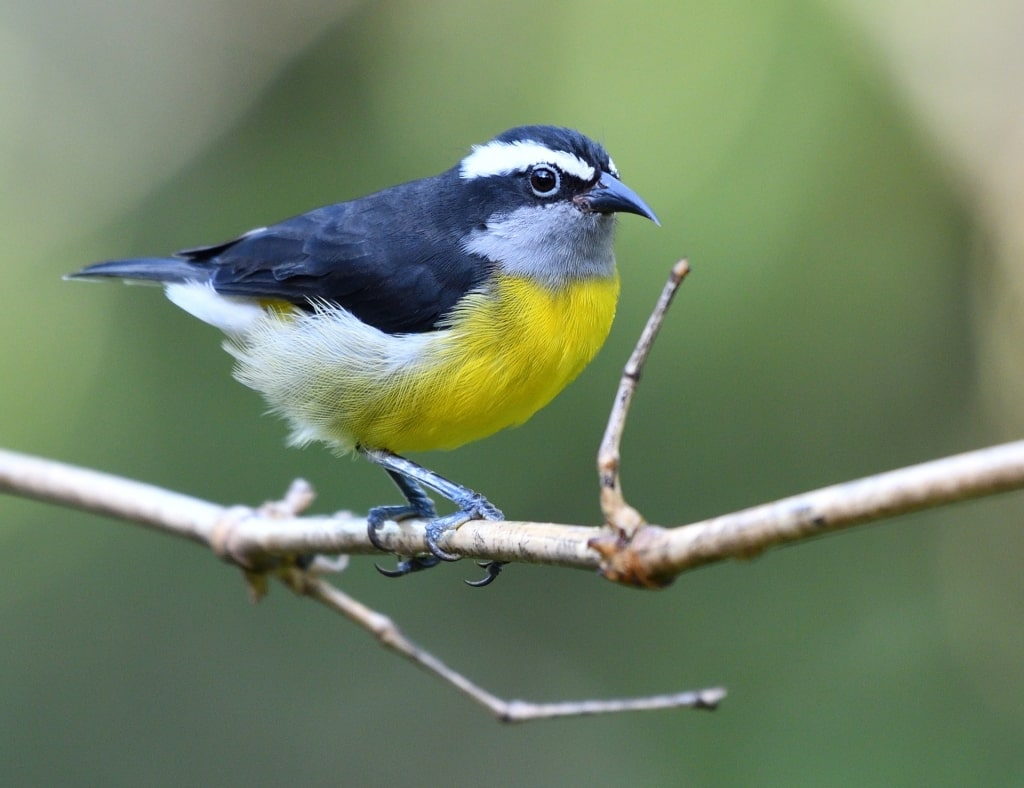
Bananaquit
Birdwatchers love the Caribbean for its many unusual species, among them the bananaquit (Coereba flaveola). It’s named for its yellow chest, and belly, and is common throughout the Caribbean.
You’ll spot them flying through the parks of Puerto Rico, or Jamaica. You’ll see them feeding among the gardens of Barbados, or St. Kitts and Nevis.
The bananaquit loves nectar, fruit, and insects, so look for them among flowering plants anywhere. Its slender, curved bill is perfectly adapted to feeding on flowers although, unlike a hummingbird, it has to perch to feed.
Brown Pelican
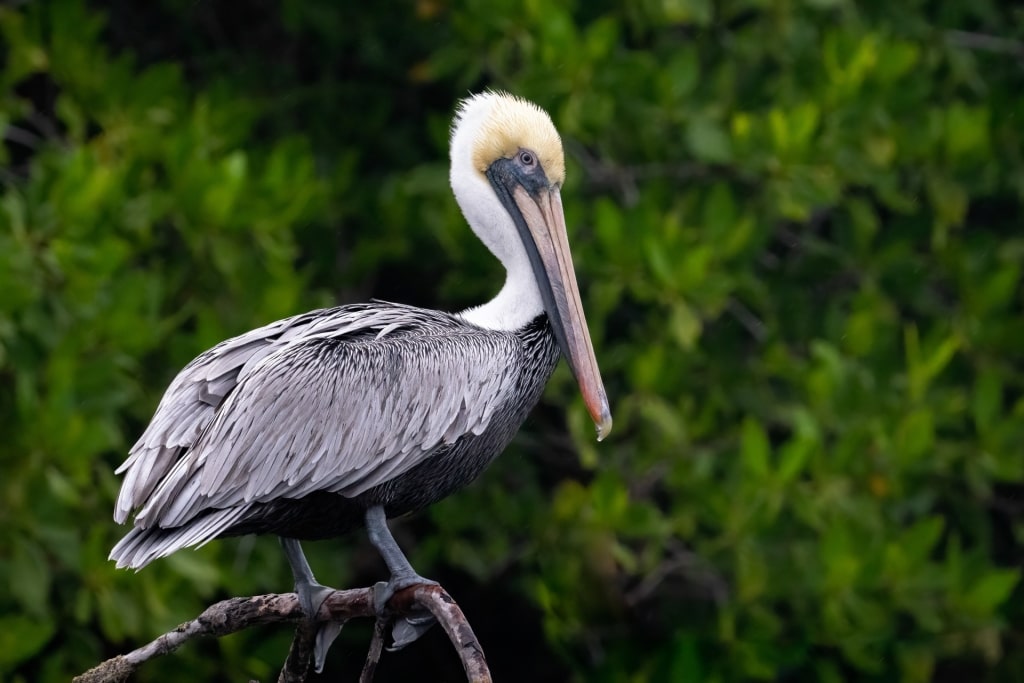
Brown pelican
Another distinctive bird, the brown pelican (Pelecanus occidentalis) is also found throughout the Caribbean. From the coastal regions of Mexico’s Yucatán Peninsula to the shores of Puerto Rico, you’ll see flocks gliding over the sea before diving to catch fish.
Photographers love coastal settings, for the contrast between land, and water. Add in a picturesque fishing scene, and you also have the perfect setting to attract pelicans.
You’ll spot the pelican on the Barbados Coat of Arms, as well as those of St. Kitts & Nevis, and Sint Maarten. Indeed, it is the national bird of all three countries.
Barracuda
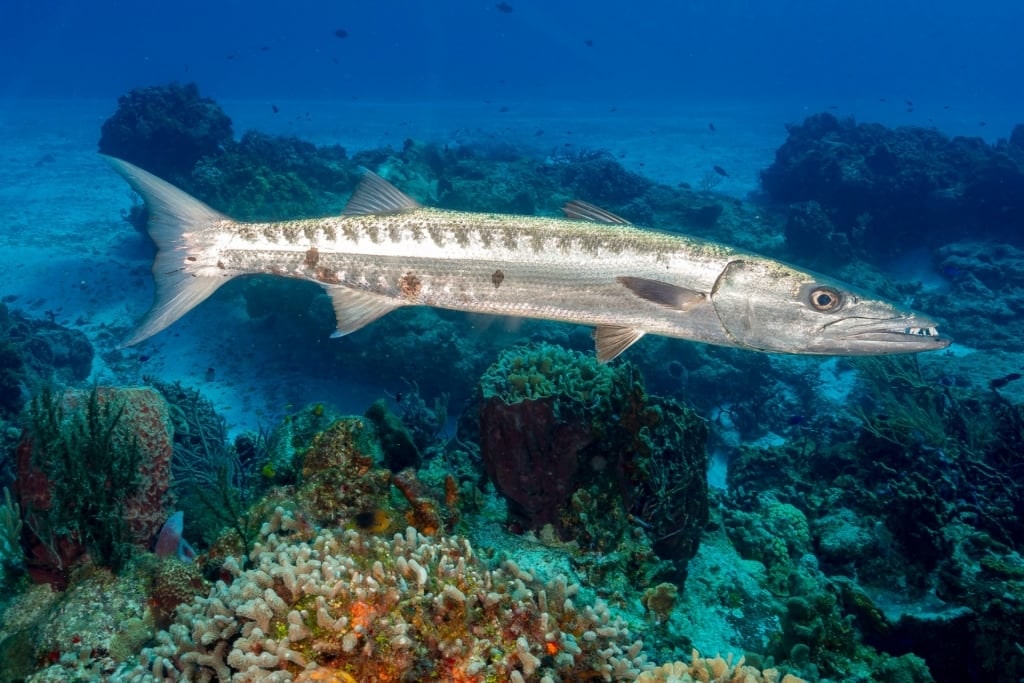
Barracuda
Underwater is where most of us expect to see the Caribbean at its most diverse and colorful. The barracuda, found in tropical waters around the world, is a large, toothy, fearsome-looking fish that any diver is soon familiar with.
You’ll find them among the waters of the Belize Barrier Reef, around Aruba, Bonaire, and Curaçao, or gliding through the wrecks off the Cayman Islands. They approach divers or snorkelers without fear, and can’t help but chill the spine.
Of course, being a popular sport fish, they are more at risk from humans than vice versa. However, it’s best to stay calm, make no sudden movements, and admire their sinister beauty from afar.
Stingray
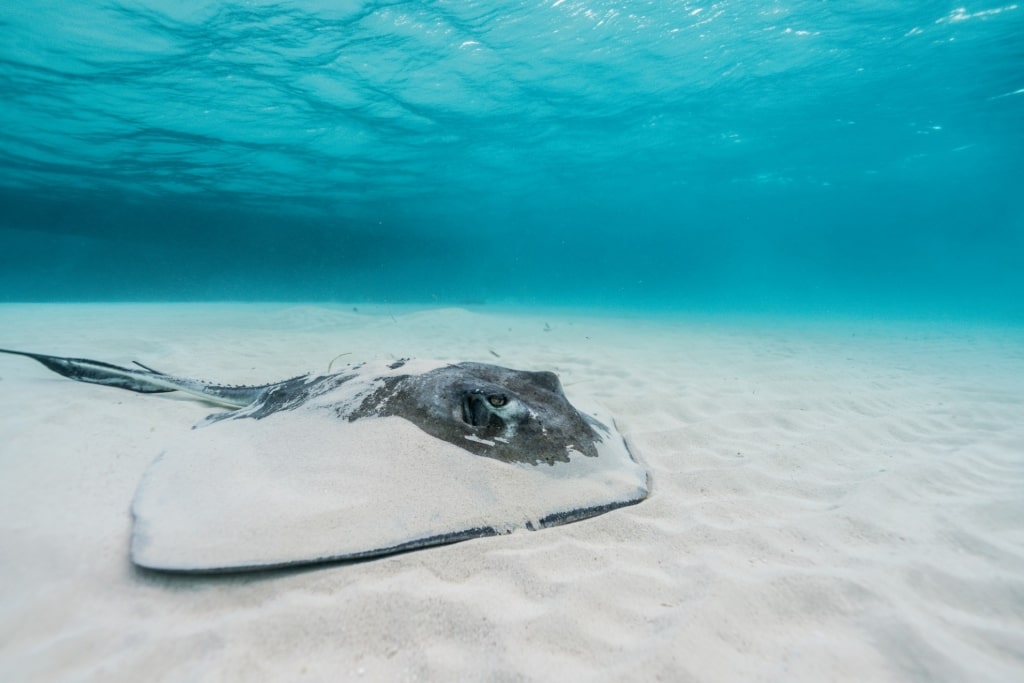
Stingray
Another species whose fearsome appearance doesn’t match the reality, the Southern stingray (Hypanus americanus) has become a popular attraction on several islands.
The most famous may be Stingray City on Grand Cayman, where you can hand-feed a shoal of these graceful creatures.
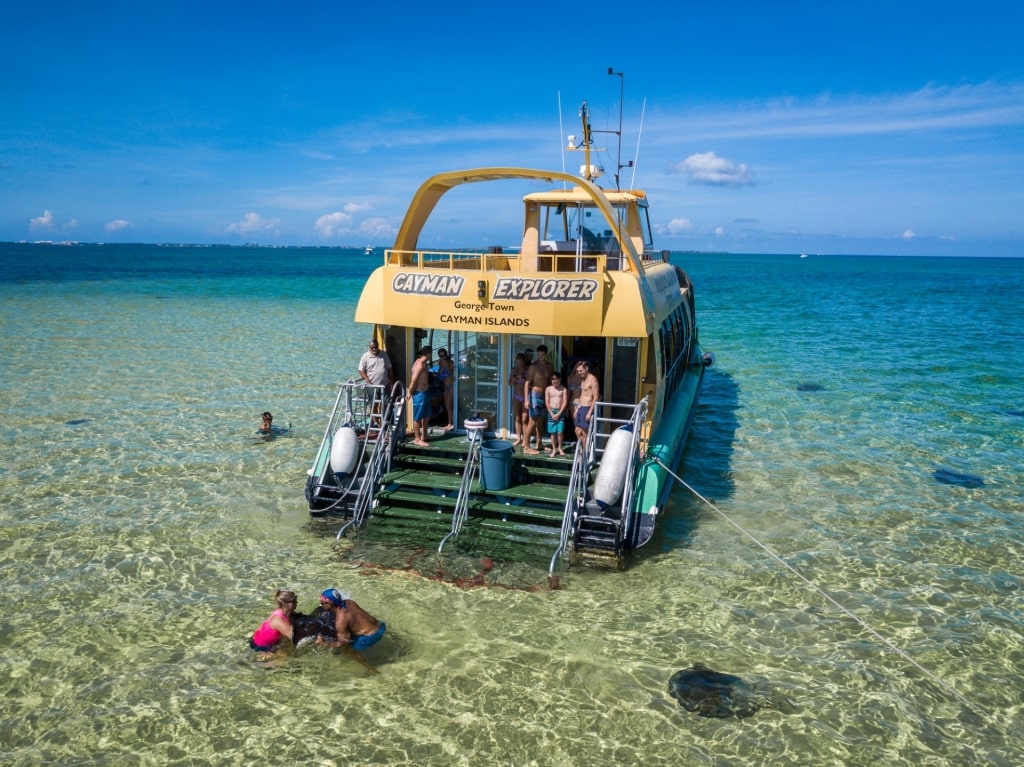
Stingray City, Grand Cayman
Antigua has a similar Stingray City, where you swim with stingrays in their own environment. In the world, you are likely to see stingrays anywhere from Belize’s Hol Chan Marine Reserve to Mexico’s Cozumel Island with its amazing offshore reef.
Nurse Shark
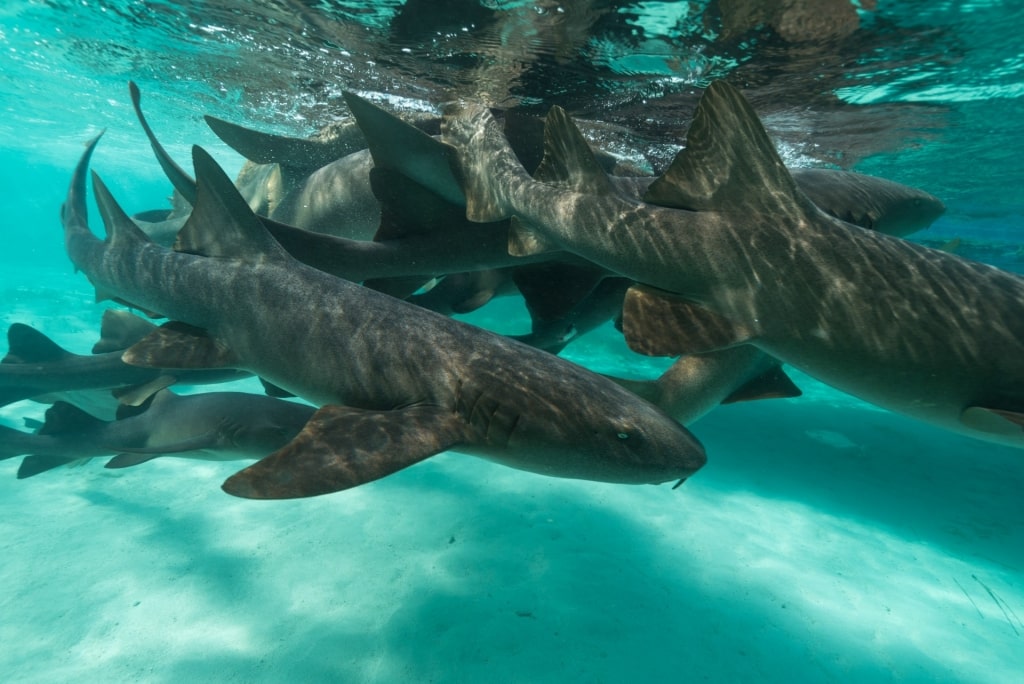
Nurse shark
Nurse sharks (Ginglymostoma cirratum) are gentle, slow-moving members of the shark family. This makes them a popular species for divers, and snorkelers to encounter in the wild.
They are bottom feeders, posing little danger to humans unless you step on one. Their preferred diet is fish, shrimp or squid, which they catch with thousands of tiny teeth.
To swim near them, you can join dive trips off islands as diverse as Tobago or Roatán, Honduras. Cozumel, Bonaire, and St. Maarten also have good reputations among divers for nurse shark encounters.
Blue Caribbean Tang
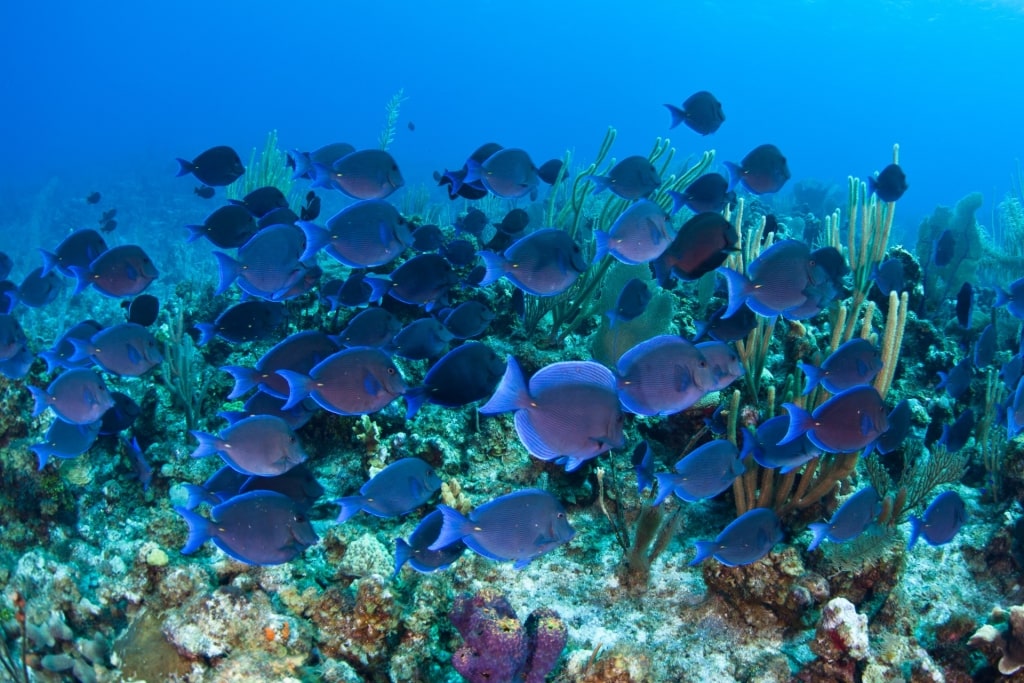
Blue Caribbean tang
One of the most colorful reef fish, the Blue Caribbean Tang (Acanthurus coeruleus) is found throughout the Caribbean. Its vibrant blue coloring, and distinctive pouting profile, make it easily recognizable.
The juvenile fish is yellow, so this fish is more common than might at first appear. They are seen on reefs, where they actively forage in shoals for algae to feed on.
Given the size of the Mesoamerican Barrier Reef off Cozumel, it’s no surprise this is a great place to spot the blue tang. Other good sites include Bonaire, Grand Cayman, and the U.S. Virgin Islands.
Bottlenose Dolphin
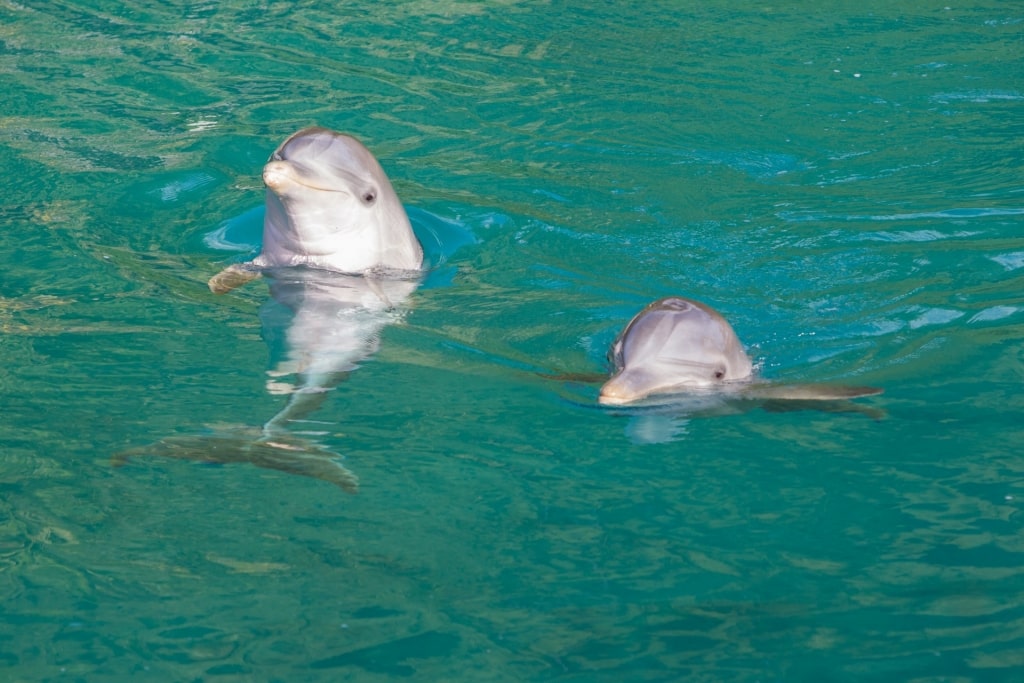
Bottlenose dolphin
Bottlenose dolphins (Tursiops truncatus) are familiar to all of us. They are one of the most loved animals in the Caribbean, bringing joy to all.
Nothing beats the thrill of seeing these lovely creatures in the wild. One hotspot for dolphin-watching tours is Samana Bay, in the Dominican Republic.
In Belize, you can see them at Tres Cocos, off the coast of Ambergris Caye. San Juan Bay, and Condado Lagoon in Puerto Rico, are also good places to enjoy dolphins in their natural habitat.
These curious creatures will often approach small excursion boats for a closer look. It’s a great opportunity to photograph them, or simply admire their graceful moves.
Sea Turtles
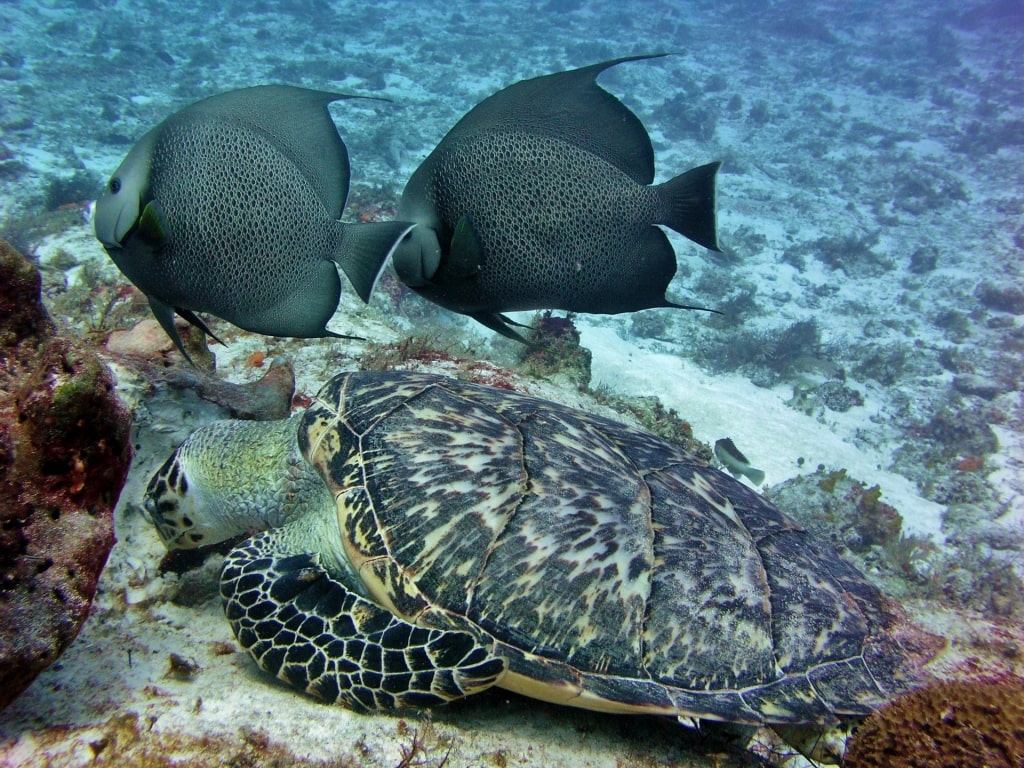
Sea turtle
It’s a memorable experience to swim with a sea turtle. These seemingly ungainly creatures are literally in their element in the clear blue waters of the Caribbean.
Many countries have major conservation efforts that ensure a healthy turtle population in their waters. These include Costa Rica, where Tortuguero hosts more than 100,000 green turtle nests per year.
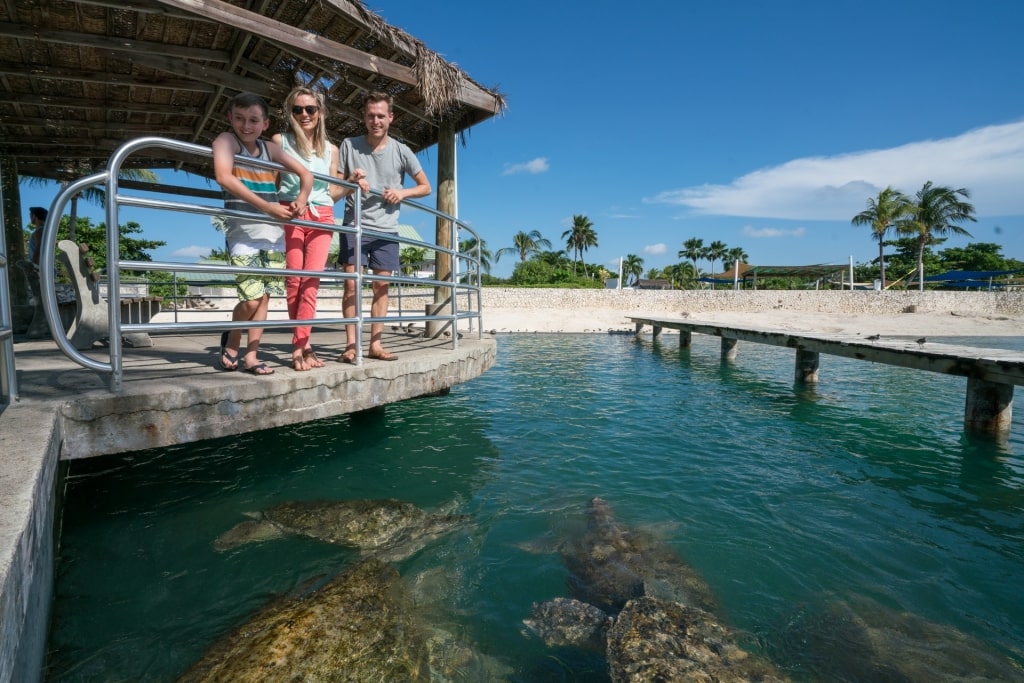
Cayman Turtle Centre, Grand Cayman
The Cayman Islands has a major facility in the Cayman Turtle Centre where you can snorkel with the animals. Puerto Rico’s Mona and Culebra islands are also important sanctuaries for green and hawksbill turtles.
Other notable destinations to see green turtles include the west coast of Barbados, and Akumal on Mexico’s Yucatán Peninsula. Buck Island Reef National Monument on St. Croix, U.S. Virgin Islands, is an important sanctuary for hawksbill turtles.
Caribbean Lobster
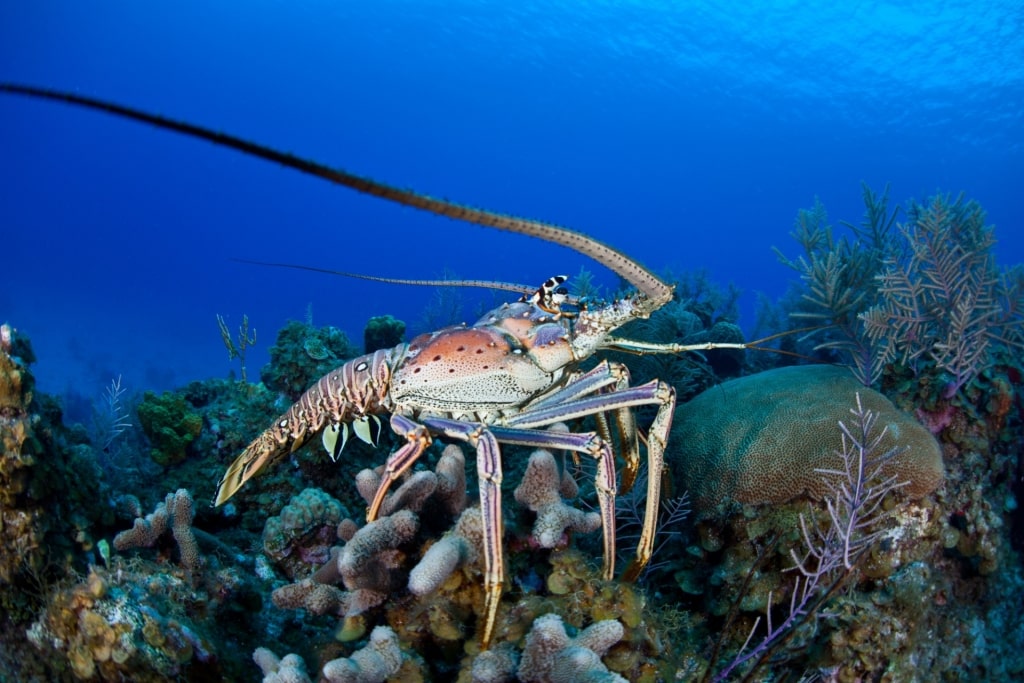
Caribbean lobster
Being nocturnal feeders, it’s more likely you will see Caribbean lobsters (Panulirus argus) on a menu than in the wild. However, while a night dive is always a memorable experience, you do stand a chance of seeing them during the day.
Good islands for seeing lobsters while diving or snorkeling in the Caribbean include Aruba, Grenada, and St. Lucia. The British Virgin Islands are also a notable hot-spot for the species.
Around the U.S. Virgin Islands, fishing surveys estimate there are at least one million lobsters. That gives you a very good chance of seeing them in the waters around St. Thomas or St. Croix.
Read: Best Places to Go Fishing in the Caribbean
Sea Stars
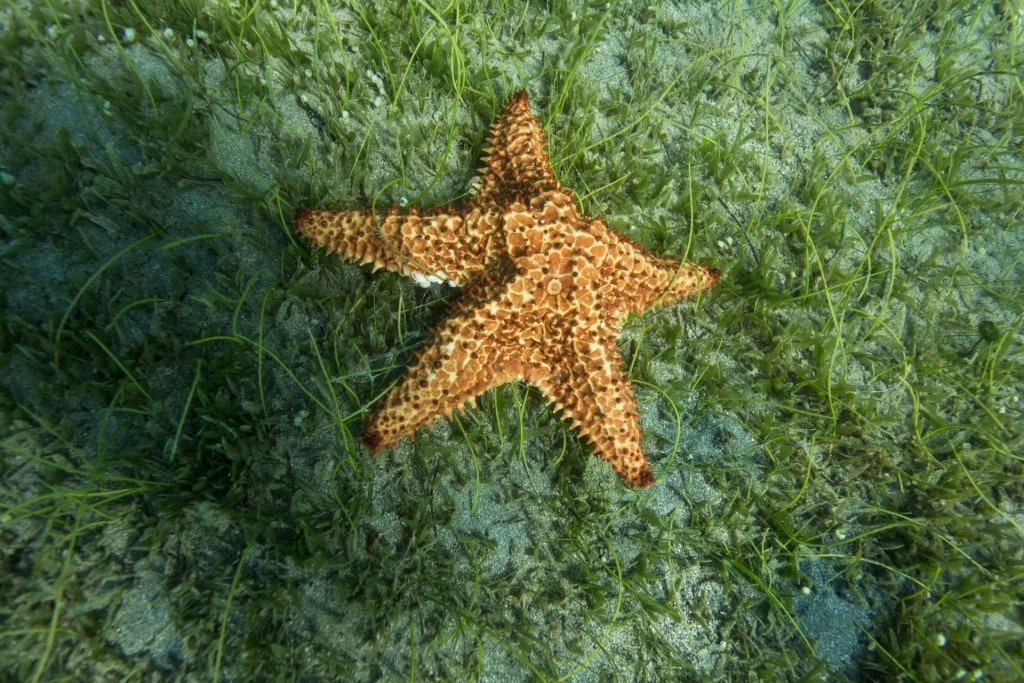
Sea stars
The bright color of a starfish, or sea star, is a delight for any snorkeler or diver to see. In the Caribbean, the most common is the red cushion starfish (Oreaster reticulatus).
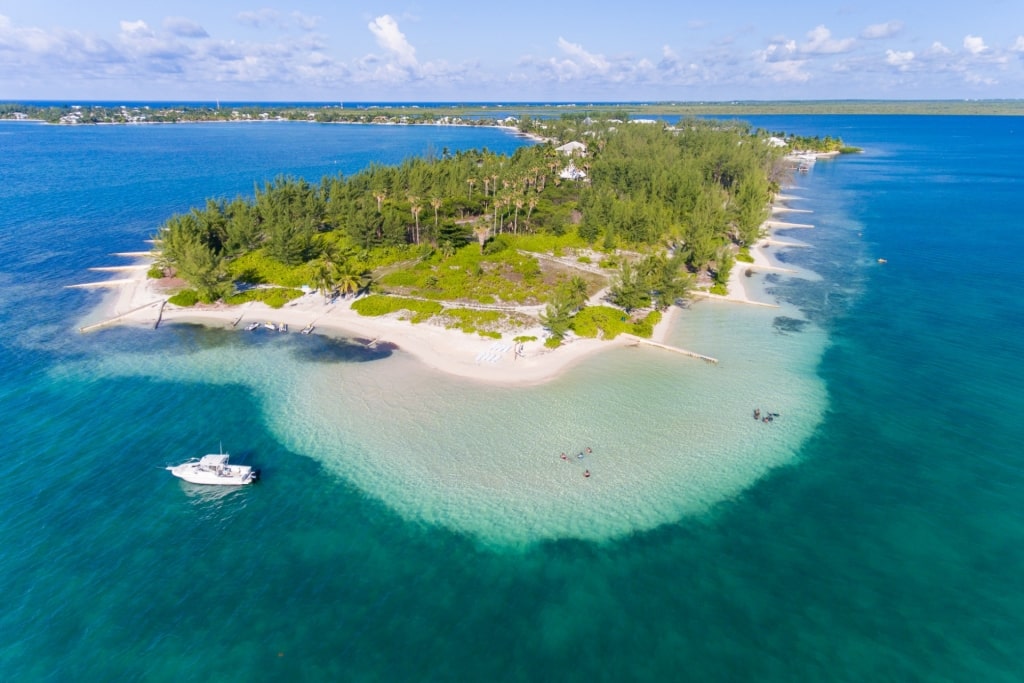
Starfish Point, Grand Cayman
Starfish Point is famous for the number to be seen in its wonderfully clear water, making it a popular spot for snorkeling in Grand Cayman. At Tres Trapi, on the northwestern coast of Aruba, you can also enjoy hundreds of starfish on the seabed.
Other key sites for a colorful display include White Bay on Jost Van Dyke, British Virgin Islands, and Trunk Bay on St. John, U.S. Virgin Islands.
Carlisle Bay on Barbados has a coral reef protected by a marine park. One of the best places to go snorkeling in Barbados, starfish are among its many underwater wonders.
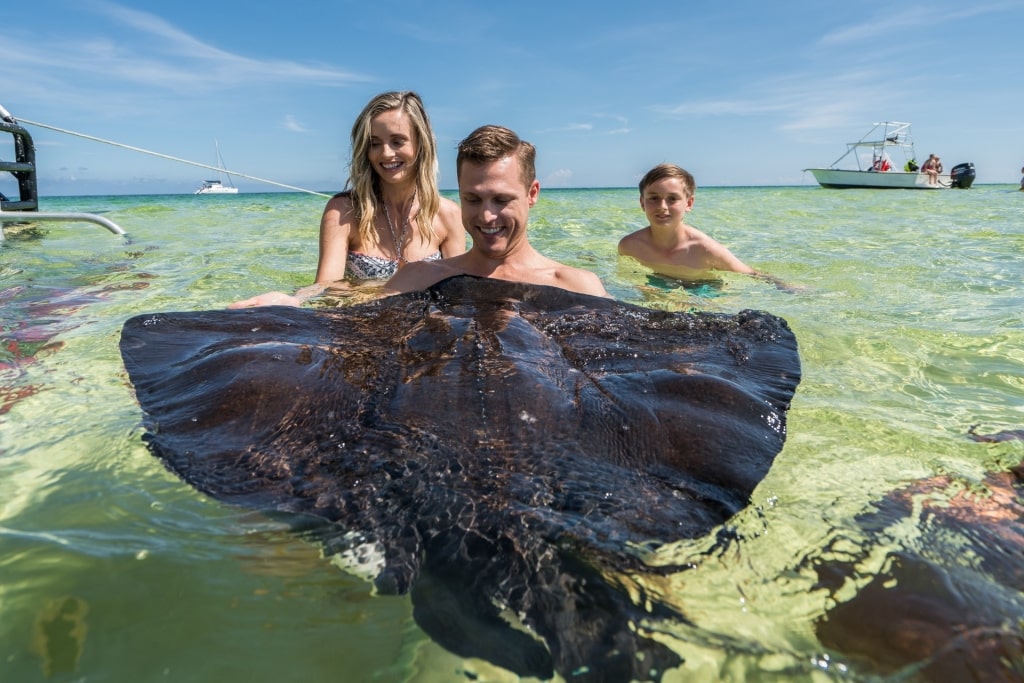
Stingray City, Grand Cayman
Has this guide to the 18 best animals to see in the Caribbean inspired you to go on a tropical safari? Then why not browse our itineraries to find the perfect Caribbean cruise for you and your loved ones?
